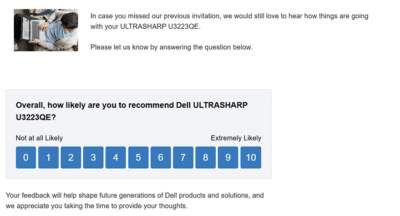How Financial Services Win Customers: A Persuasive UX Analysis on Personal Loans
Personal Loans are on the rise – so I pit the marketing experiences of a neoBank (Marcus), a highly regarded Credit Union (Alliant) and a startup (Avant) to see who does the best job in persuading their prospect to apply.
Value Proposition
In analyzing the Personal Loan marketing experiences of Alliant, Avant, and Goldman’s Marcus, it’s clear that the banner is the five-second pitch that sets the key perception for visitors. Alliant’s banner is bland and generic, lacking a clear value proposition despite offering competitive rates and loan amounts. Avant focuses on the customer end-goal and next actions, but the next action of ‘Check your loan options’ doesn’t convey the promise of a personalized rate. On the other hand, Goldman’s Marcus offers the clearest value proposition, using a platform image and a Calendar/Progress indicator to convey more than a stock image. In terms of mobile prioritization, Marcus delivers the clearest value proposition, followed by Avant, while Alliant wastes its prime real estate. The key insight here is that banners should lead with a clear, simple value proposition – whether it’s the best rate, service, or fees – something that a visitor can latch on to immediately.
Action List:
- Ensure the banner conveys a clear, simple value proposition
- Use platform images and progress indicators to convey more than a stock image
- Prioritize mobile experience by delivering a clear value proposition early on
- Consider using customer proof points to enhance the value proposition.
Primary Feature
Finding the Best Personal Loan Marketing Experience
When it comes to personal loans, finding the right rates, loan amounts, and fees is crucial. After analyzing the marketing experiences of Alliant, Marcus, and Avant, it’s clear that each has its strengths and weaknesses. Alliant provides the most comprehensive information, but the presentation could be improved for better readability. Avant’s clean design is appealing, but it lacks detailed information, and that 35.99% rate is shocking. Marcus, on the other hand, offers no rate range and loses clarity in its presentation. Interestingly, the section for Alliant works better on mobile than desktop, and the fine print is overwhelming.
Action List:
- Improve the presentation of Alliant’s information, possibly using a table format for better scannability
- Provide more detailed information about fees and rates for Avant
- Enhance the clarity of Marcus’s presentation and include a rate range
- Optimize the mobile and desktop experience for Alliant’s section
- Simplify the fine print to make it more user-friendly
Features
As we dive into rate modeling, it’s clear that users are frustrated with the traditional long forms and disconnected sliders that many loan providers offer. Marcus lacks a user-friendly rate modeling tool, while Alliant’s calculator falls short on the mobile experience. The ideal solution would be a calculator with bold sliders, like Marcus, but with the user-friendly experience of Alliant. As users venture further into the process, both Marcus and Alliant struggle to effectively tackle the competition, with unconvincing comparison tables and missed opportunities for highlighting their competitive rates and limits. Avant also falls short with a lack of competitive table, possibly due to hidden fees, indicating a target market of sub-prime borrowers. The key insight here is the need to prioritize the mobile experience, rather than just making it responsive, and to avoid creating a desktop calculator that is not mobile-friendly. Additionally, it’s important to note that consumers can easily spot a lackluster competitive table, making it crucial to effectively compare against both direct and indirect competitors, as SOFI does successfully.
Action List:
- Prioritize the mobile user experience for rate modeling, ensuring a seamless and user-friendly process.
- Avoid creating a desktop calculator that is not mobile-friendly, and utilize smartphone native features for a better mobile experience.
- Create a compelling and effective competitive table that effectively compares against both direct and indirect competitors, as demonstrated by SOFI.
Proof
Leveraging Customer Proof and Use Cases to Drive Personal Loan Marketing Success
In analyzing the marketing experiences of Avant, Marcus, and Alliant, it became clear that customer proof and use cases play a crucial role in driving the success of personal loan marketing. Avant effectively utilizes Trustpilot reviews to provide customer proof, although it is important to note that these reviews do not show up with an adblocker, highlighting the need to always check the page with an adblocker on. Both Avant and Marcus use scenarios to answer the “Why a Personal loan” question, while Alliant stands out as the only one to offer industry proof-points. Additionally, Alliant’s email opt-in feature provides a compelling reason for users to sign up, making it a no-brainer for those in the market for a loan. However, it was noted that placing this section in the top-half of the page, right below the rates section, could further enhance its effectiveness. The insight gained from these findings is the importance of leveraging testimonials and use cases to showcase how others have used the product to solve their problems, as people love to see real-life examples of successful outcomes.
Action List:
- Incorporate customer testimonials and use cases to demonstrate the effectiveness of personal loans in solving real-life financial challenges.
- Ensure that customer proof, such as Trustpilot reviews, is easily accessible and not blocked by adblockers.
- Consider incorporating industry proof-points to further validate the credibility and reliability of the personal loan offering.
- Place compelling email opt-in features in strategic locations on the page, such as below the rates section, to encourage user sign-ups.
WIIFY
Crafting a Persuasive User Experience for Personal Loan Marketing
In analyzing the marketing experiences of Credit Union (Alliant), Bank (Marcus), and a startup (Avant), it became evident that none of them effectively convinced a problem or solution aware visitor, nor did they provide a clear, compelling value proposition. Despite Alliant’s great service and best rates, its user experience fell short. This highlights the importance of answering the four big questions – value proposition, target customer, key features, and social proof – midway through the user experience. Ultimately, the most persuasive user experience can win over even the best product.
Action List:
- Clearly articulate the value proposition to address the visitor’s problem or need
- Identify and target the specific customer demographic for the personal loan product
- Highlight key features that differentiate the loan offering from competitors
- Incorporate social proof, such as customer testimonials or reviews, to build trust and credibility in the user experience
Customer Journey
Understanding the Buyer Journey: Are Customers Product-Aware, Solution-Aware, or Problem-Aware?
As a UX researcher, I’ve analyzed three Personal Loan marketing experiences – Credit Union (Alliant), Bank (Marcus), and a startup (Avant). After evaluating the positioning, product, and rate questions, the next big question is “Why Us?” This question can be broken down into two parts: “Why a Loan” and “Why a Loan from Us.” Avant focuses on solution-aware users by offering four reasons for choosing them: speed, no surprises, human support, and easy management. Alliant attempts to answer both questions but succeeds at neither, offering speed, amount & terms, and why a personal loan. On the other hand, Marcus does not directly answer the “Why Us” question and instead relies on customer testimonials. However, this approach may ask a lot from users to tease out an answer.
Action List:
- Identify the stage of the buyer journey for each target audience
- Tailor the messaging and content to address the specific awareness level of the audience
- Utilize customer testimonials effectively to support the “Why Us” question
- Conduct user testing to ensure the messaging resonates with the target audience’s awareness level
Objections
As a UX researcher one of the key things I look for is how are buying objections handled?
Marcus stands out for effectively handling buying objections by providing 7-10 critical questions with on-page answers via expandable sections. This approach is crucial for addressing pre-sales questions on a product page and can significantly impact conversion rates. In comparison, Alliant falls short with only 4 answers and a search function that may not always provide relevant information, potentially leading to lower conversion. Avant, on the other hand, lacks any answers to pre-sales questions, further hindering the buying process.
Action List:
- Implement 7-10 critical pre-sales questions with on-page answers using expandable sections
- Ensure relevant answers to open-ended questions, such as loan requirements, are readily available
- Address key pre-sales FAQs related to rates, fees, and timeline (speed) on the conversion page
- Consider using inline, collapsed accordions for a user-friendly experience
Persuasion Ladder
The Persuasion Ladder: Analyzing Personal Loan Marketing Experiences
After comparing the Personal Loan marketing experiences of Credit Union (Alliant), Bank (Marcus), and a startup (Avant), I find no clear winner – each offers a mix of persuasive and less effective elements. While there are certainly some positive aspects to each experience, there are also areas that could be improved upon. To enhance your current experience, consider the following two steps:
- Edit your page for ONE persona who’s product-category aware
- Look at mobile first when reviewing designs, so you’re aligning with how platforms are used
Help
Optimizing Blog Posts for Personal Loan Marketing
In analyzing the Personal Loan marketing experiences of Credit Union (Alliant), Bank (Marcus), and startup (Avant), I found that blog posts on product pages can be effective for engaging both problem and solution aware visitors. While I typically don’t favor blog posts on product pages, the curated content on these platforms stood out as valuable resources for potential borrowers. Additionally, Marcus made a smart decision by not putting blog content into a carousel on mobile, ensuring a seamless and user-friendly experience for visitors.
Action List:
- Curate blog content to address the needs of both problem and solution aware visitors.
- Optimize blog posts for mobile viewing by avoiding carousels and ensuring a user-friendly experience.
How it Works
Enhancing the User Experience of Personal Loan Marketing Experiences
In analyzing three different personal loan marketing experiences, it is clear that Avant stands out as the best option, offering a comprehensive coverage of most scenarios. The mobile carousel on Avant’s website is particularly effective due to its authentic imagery and the use of faded slides that pique curiosity. However, it would be even more impactful if testimonials were included to accompany each scenario. On the other hand, Marcus’s design suffers from poor usability on desktop, but performs well on mobile. A simple fix would be to swap the paragraph with the list, ensuring that the list is displayed on a solid background. Alternatively, replacing the entire section with a design similar to Avant’s would greatly improve the user experience.






















































Comments
Comment policy: We love comments and appreciate the time that readers spend to share ideas and give feedback. However, all comments are manually moderated and those deemed to be spam or solely promotional will be deleted.